The Network
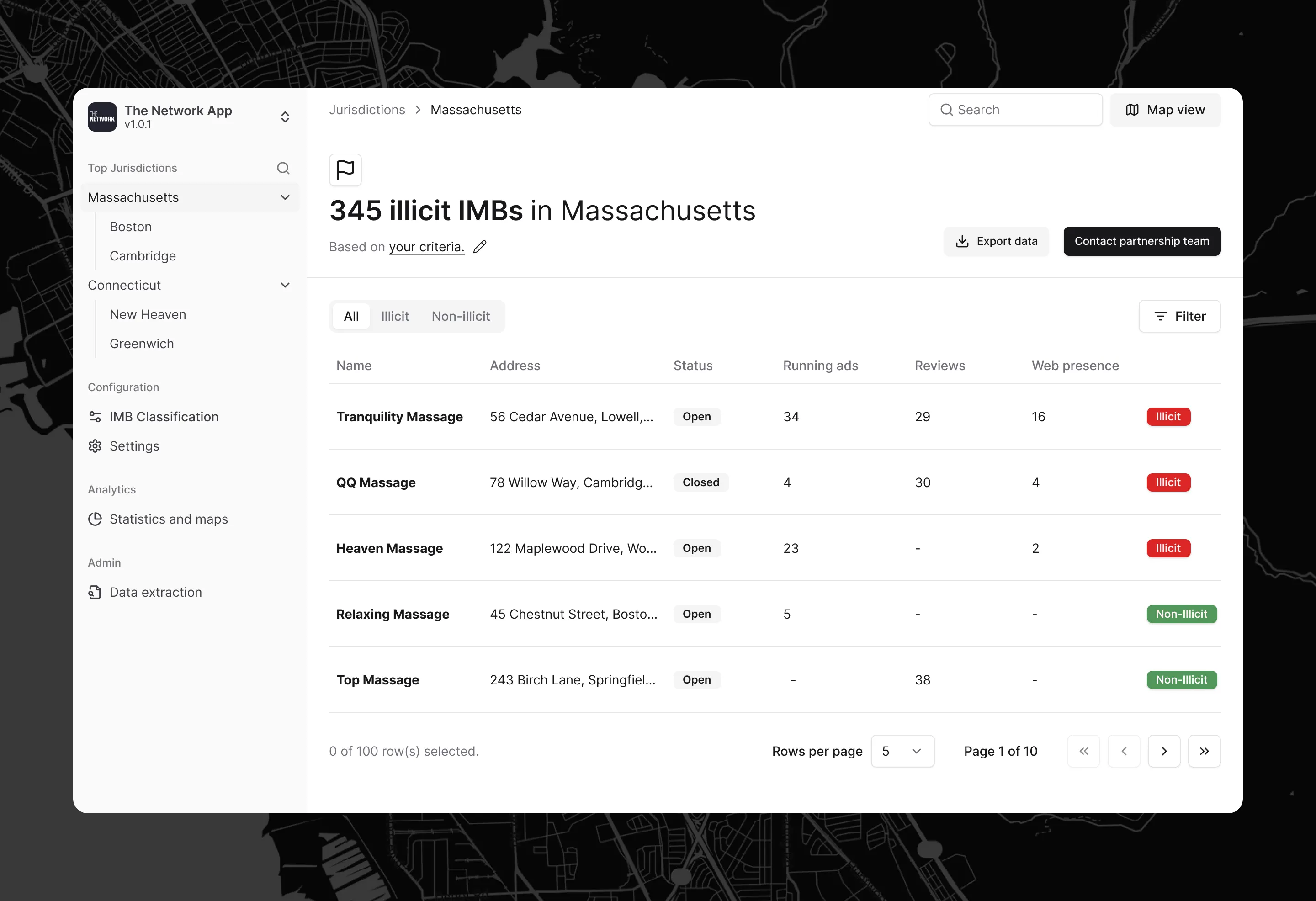
Giving law enforcement the right tools to act fast
We designed a dashboard that enables U.S. law officials to investigate human trafficking, by analyzing Illicit Massage Businesses (IMBs).
We pushed law enforcement investigation forward by replacing spreadsheets, PDFs, and scattered tools with a dashboard that lets investigators visualize illicit activity, and take action.
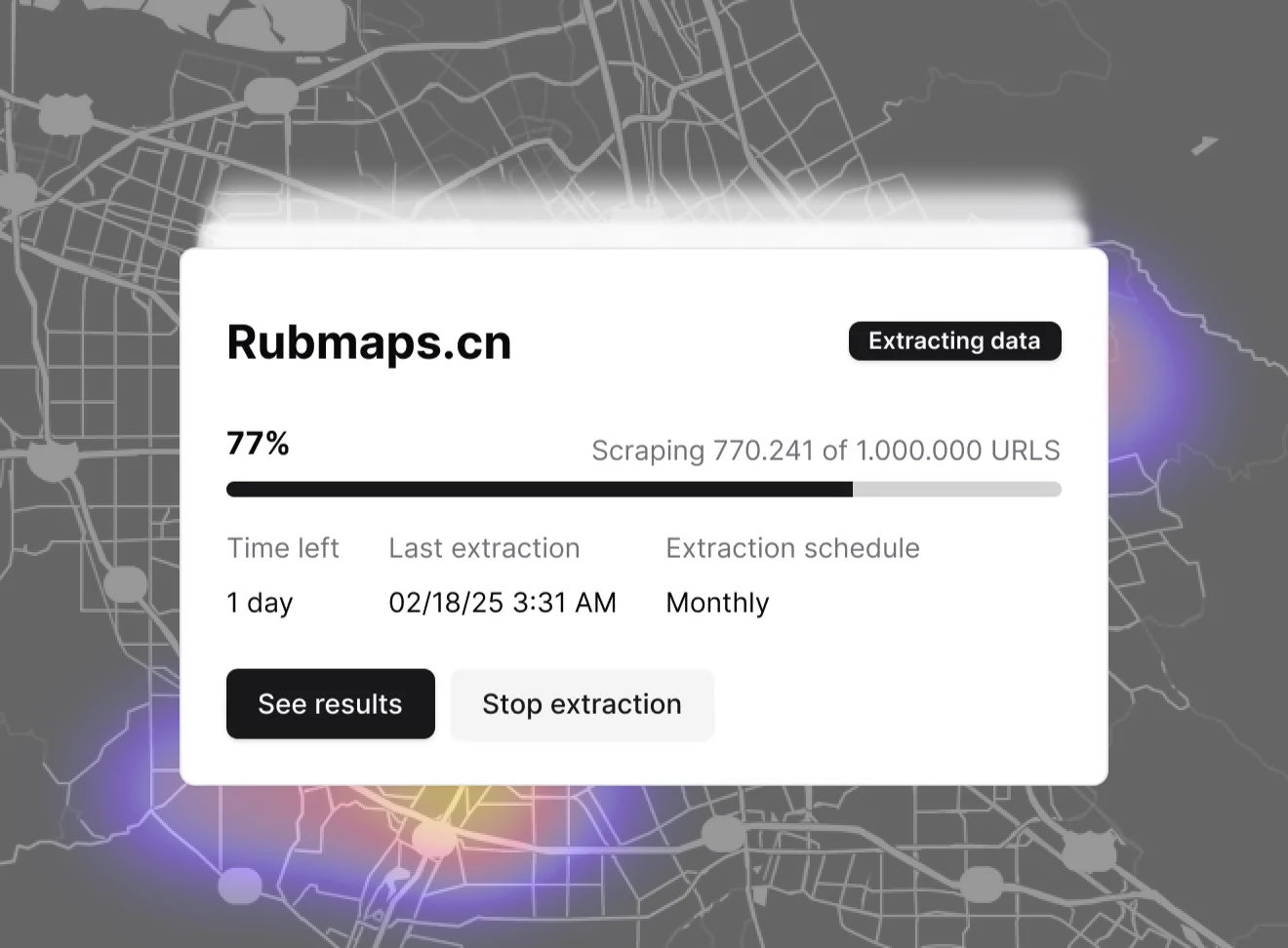
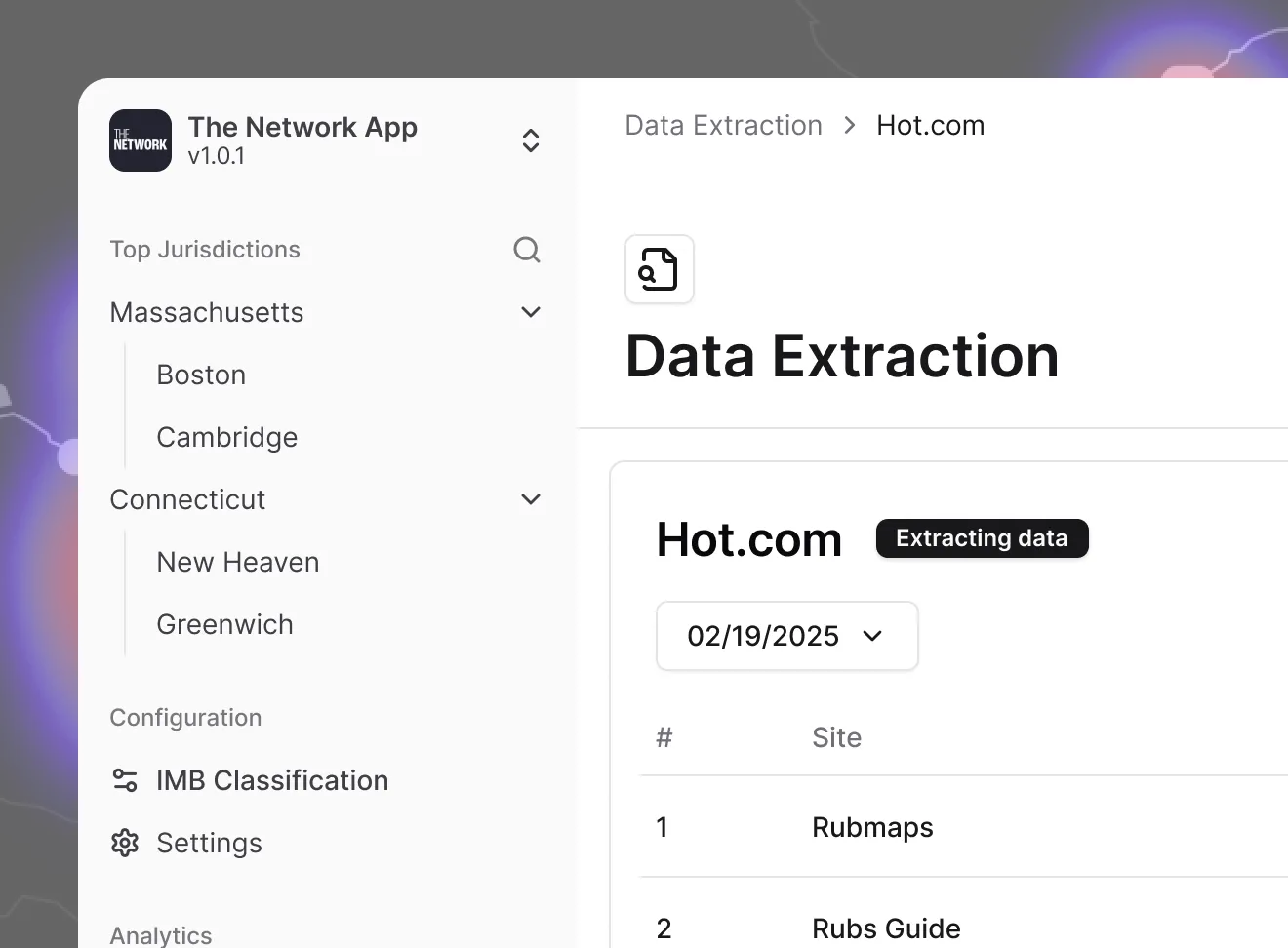
Inefficient data-sharing means delayed investigations
The Network is a nonprofit working to disrupt human trafficking in the United States, with a focus on the illicit massage industry (IMI). Through open source data collection they surface intelligence that helps law enforcement prosecute traffickers.
Turning information into action is hard. Data is scattered across PDFs, spreadsheets, and dashboards. There was no tool to evaluate and track illicit activity. The Network partnered with us to design a platform that brings clarity and speed to anti-trafficking investigations.
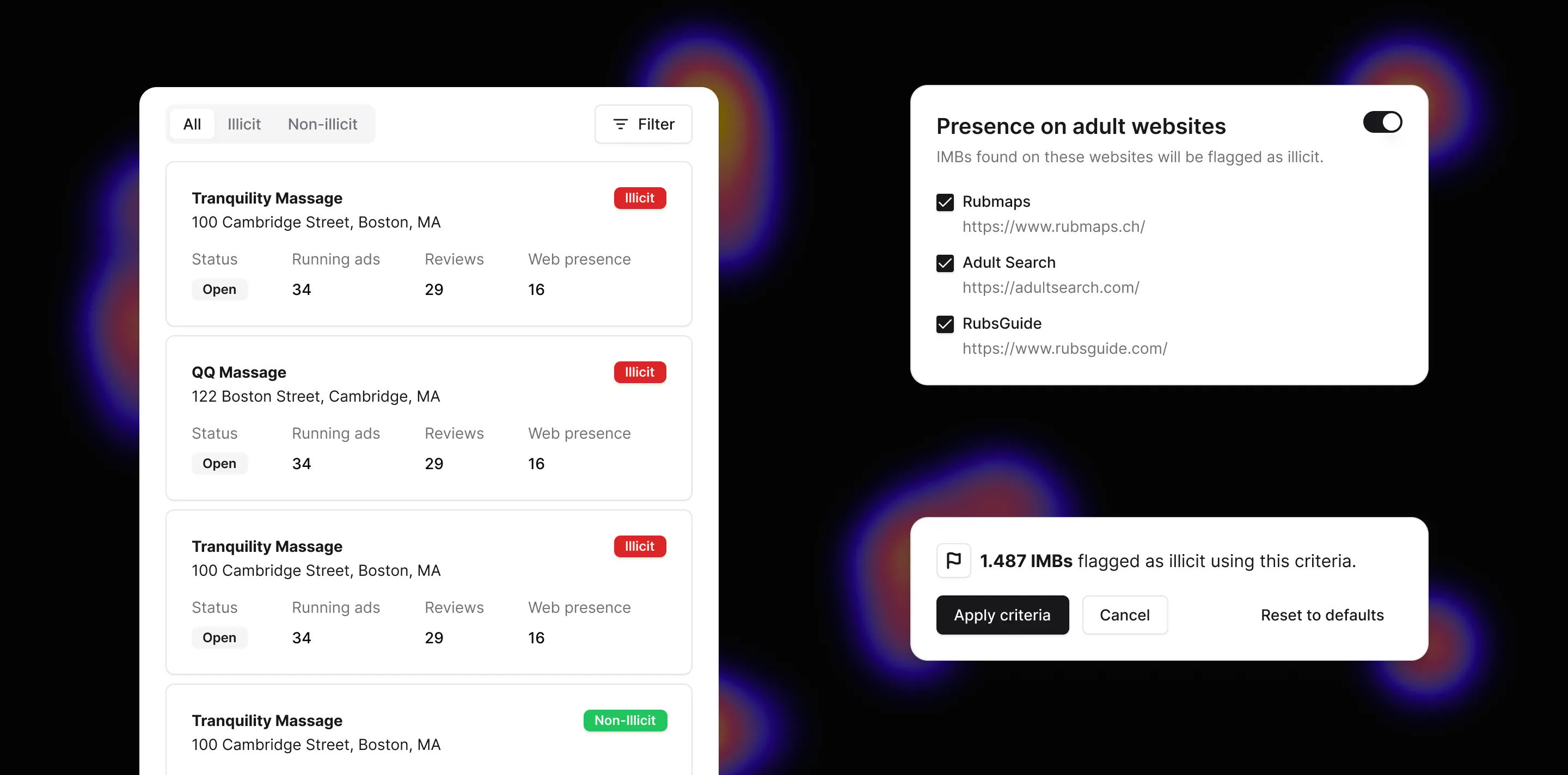
An actionable UX strategy
After mapping user stories across roles, we converted our insights into HMWs, and later into screen specs.
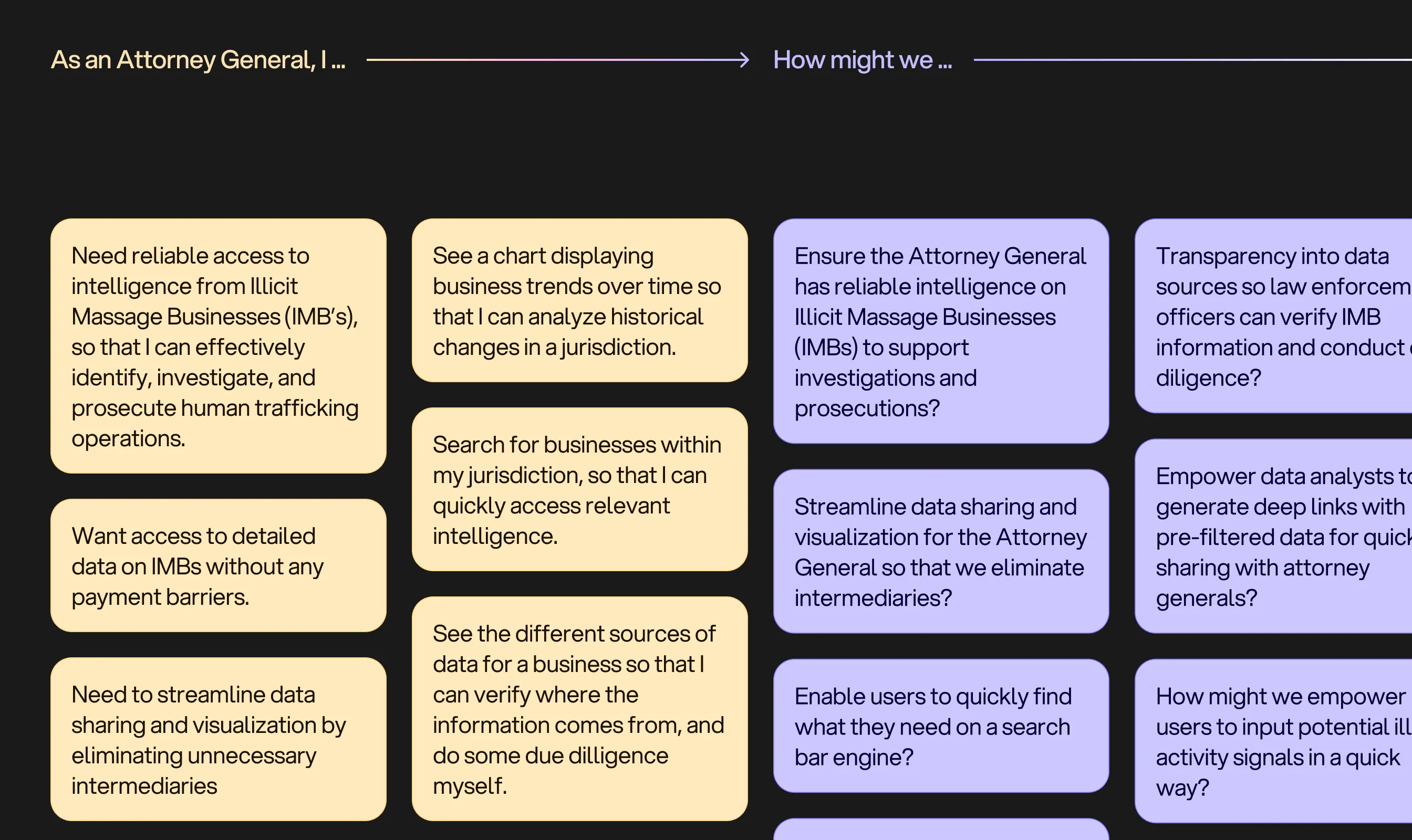
User stories and HMWs synthesized from early workshops with TheNetwork team.
What makes a business suspicious of human trafficking?
To investigate IMBs, attorneys should define what makes a business suspicious. Working with our client, we came up with the following requirements for this tool in the dashboard. Our users should be able to:
- Classify businesses on the entire platform at once.
- Classify individual businesses manually.
- Get feedback on how many businesses would be classified as illicit.
- Keep users in context, without making them navigate to other screens to tweak the classification.
- Provide easy access to it.
With this in mind, we designed a configurable panel where they can toggle rules like adult site presence, ad volume, or erotic reviews. The number of illicit IMBs updates in real time.
From national view to neighborhood-level signals
The jurisdiction view adapts to state, county, or city data using a similar structure. This creates a consistent UX across regions, while keeping the UI easy to build, maintain, and extend.
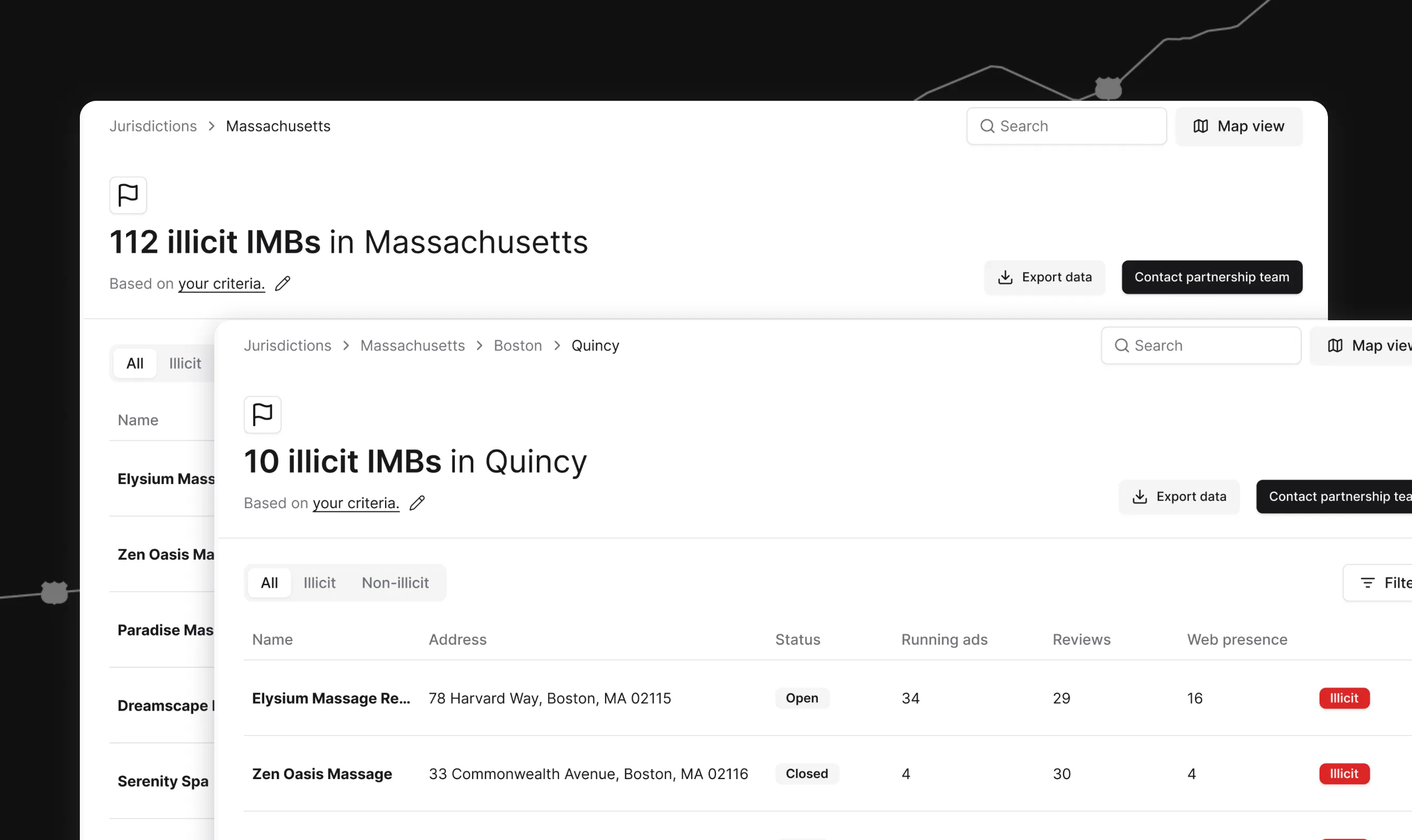
Users can switch between list and map view at any time. Both reflect the same filters, criteria, and results in real time.
Digging into the details of each business
Each business has its own profile showing whether it meets the illicit criteria, along with storefront photos, ad presence, review content, and source links. Users can manually override classifications, review flagged signals, and verify tone-based annotations. This traceability supports trust and gives investigators the evidence they need to act.
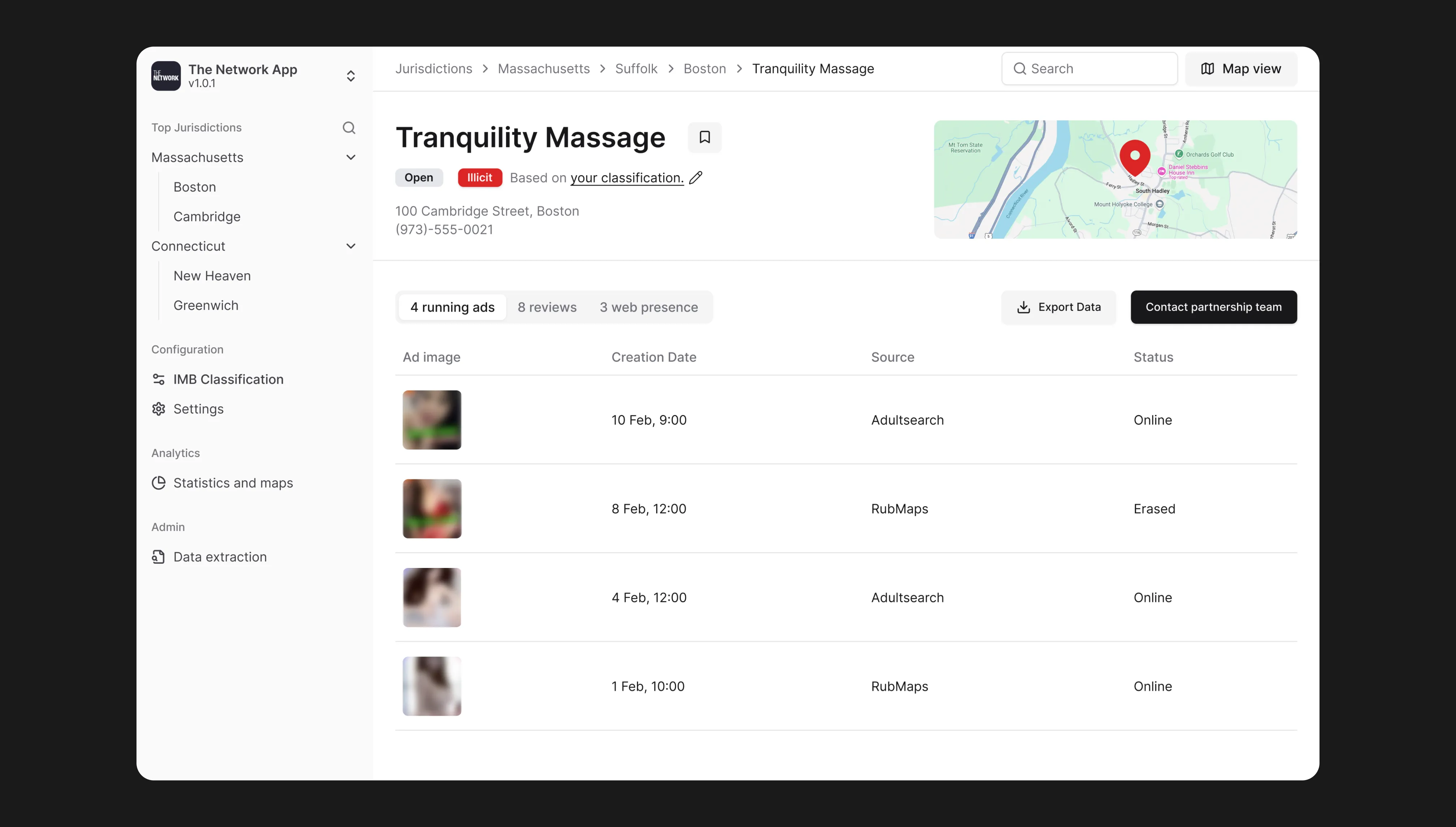
Search that supports real investigation work
Investigators can run keyword searches across all businesses while layering structured filters like jurisdiction, signal type, and classification status.
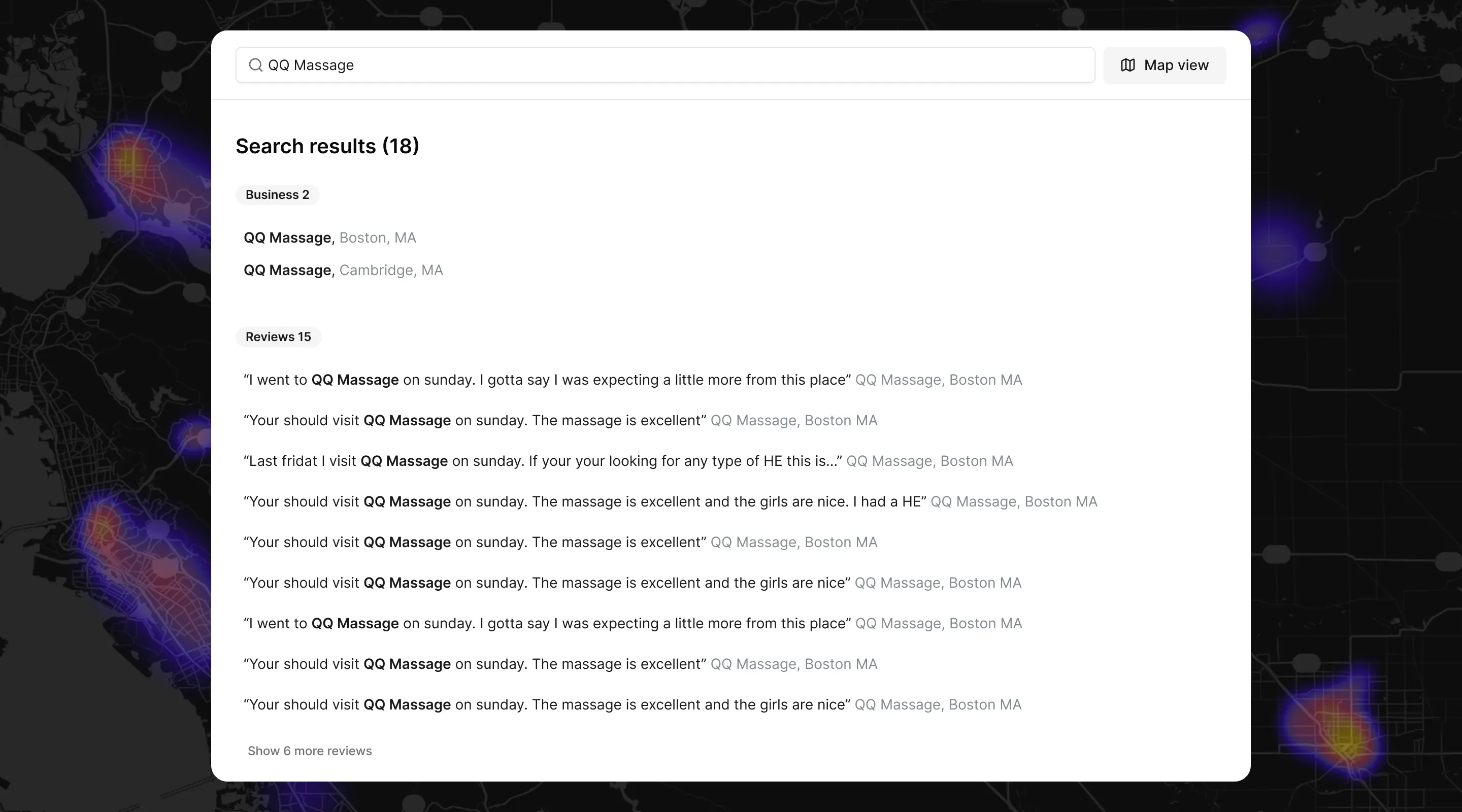
Laying the groundwork for long-term impact
Flexxi helped bring structure and momentum to a high-stakes mission. Our work established core interaction models that are now shaping how The Network’s analysts, researchers, and partners explore patterns of trafficking activity.
While this phase focused on structure and usability, it created more than a clickable prototype. This project helped TheNetwork align on their strategy, polish their classification logic, and prepare for implementation.
Want a strategic partner to elevate your project?


